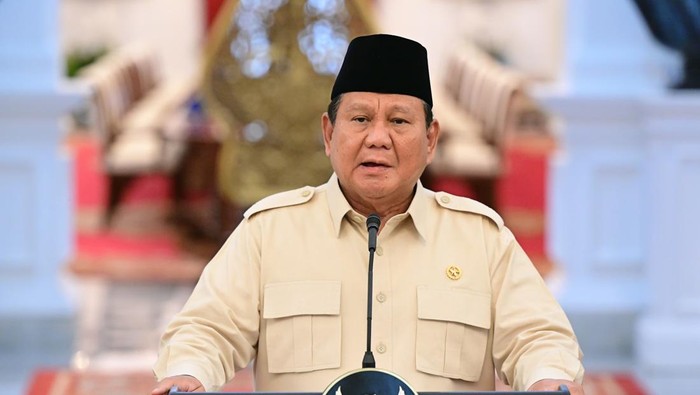Prabowo's Vision for Rural Economic Transformation
On July 21, 2025, Indonesia's president-elect Prabowo Subianto officially launched a landmark initiative: 80,000 Koperasi Desa Merah Putih or Red-and-White Village Cooperatives. This ambitious program aims to empower rural economies by transforming traditional village structures into cooperative-based business units. The program was inaugurated in Cianjur, West Java, and is expected to create a new economic backbone by promoting financial inclusion, agriculture-based entrepreneurship, and village-level resilience.
The concept of village cooperatives is not new in Indonesia, but Prabowo's initiative is the largest of its kind. It seeks to realign the country’s rural economy with national development goals, providing a sustainable model for self-sufficiency and poverty reduction.
This initiative also signals a policy direction that prioritizes economic justice and community empowerment through grassroots-led enterprises.
How the Red-and-White Village Cooperatives Will Operate
Each Red-and-White Cooperative will serve as a hybrid entity combining production, distribution, and financial services. Their structure enables villagers to own shares collectively and receive dividends based on their contributions and participation. The cooperatives are expected to operate in sectors such as agriculture, food processing, fisheries, handicrafts, and retail.
Key operational features include:
- Start-up Capital and Government Facilitation: Each cooperative will receive initial support from the Ministry of Cooperatives and SMEs and will be registered as formal business entities.
- Technology and Financial Access: The cooperatives will be equipped with digital financial tools and mobile-based transaction platforms to ensure accessibility, especially in remote regions.
- Training and Capacity Building: Government agencies will work with local universities and NGOs to deliver entrepreneurship and financial literacy training.
This new model integrates economic activities, reduces reliance on urban migration, and offers a systematic pathway to elevate the rural economy through collective ownership.
Strategic Importance and National Goals
The Red-and-White Cooperative initiative plays a key role in Indonesia's broader economic vision. President-elect Prabowo’s economic agenda focuses on national food security, equitable development, and reducing inequality through village-led economic models. The cooperatives are designed to:
- Support National Food Security: By investing in local agriculture and processing units, the cooperatives aim to boost domestic food production and reduce import dependence.
- Revive Local Economies: Empowering rural communities to become economically productive can mitigate urban unemployment and reduce infrastructure strain in cities.
- Encourage Local Investment: The initiative invites local investors and philanthropic organizations to support cooperative growth, enhancing regional GDP.
The project also aligns with the Sustainable Development Goals (SDGs), especially Goal 8 (Decent Work and Economic Growth) and Goal 10 (Reduced Inequalities), as it promotes equitable access to economic resources.
Political Messaging and Symbolism
The term Merah Putih (Red and White), taken from the Indonesian flag, adds nationalistic symbolism to the program. It reinforces the government's commitment to Indonesian unity and self-reliance. Prabowo’s political messaging heavily emphasizes economic independence and building a "new economy from the village level up."
Analysts see this initiative as both an economic strategy and a political message that the government is serious about inclusive growth and systemic change. It could also be a move to consolidate political support ahead of the formal presidential inauguration.
Challenges Ahead
While the scale of the initiative is impressive, the implementation poses several challenges:
- Governance and Accountability: Ensuring transparency and avoiding corruption in cooperative management will be crucial.
- Infrastructure and Access: Many remote villages still face limited access to electricity, internet, and basic infrastructure, which could hinder operational success.
- Human Resources: There is a shortage of trained personnel to manage and sustain cooperative business models at the scale envisioned.
These hurdles require cross-sector collaboration between ministries, local governments, private sector partners, and community organizations.
Regional Impact and International Relevance
Globally, cooperative models have succeeded in countries like India, Kenya, and Brazil, where community-led initiatives improved agricultural productivity and rural livelihoods. Indonesia’s model could become a benchmark for Southeast Asia, especially if it successfully scales in diverse geographical and socio-economic contexts.
Neighboring countries are watching closely, particularly in how the government will ensure accountability and scale outcomes beyond political rhetoric.
The launch of 80,000 Red-and-White Village Cooperatives marks a significant shift in Indonesia’s rural development policy. It highlights the government’s intention to reduce inequality, stimulate inclusive growth, and strengthen the local economy from the ground up. While execution will require detailed planning and careful monitoring, the vision behind it offers a hopeful blueprint for transforming Indonesia’s village economy in the coming years.
Read More






 Monday, 15-12-25
Monday, 15-12-25







